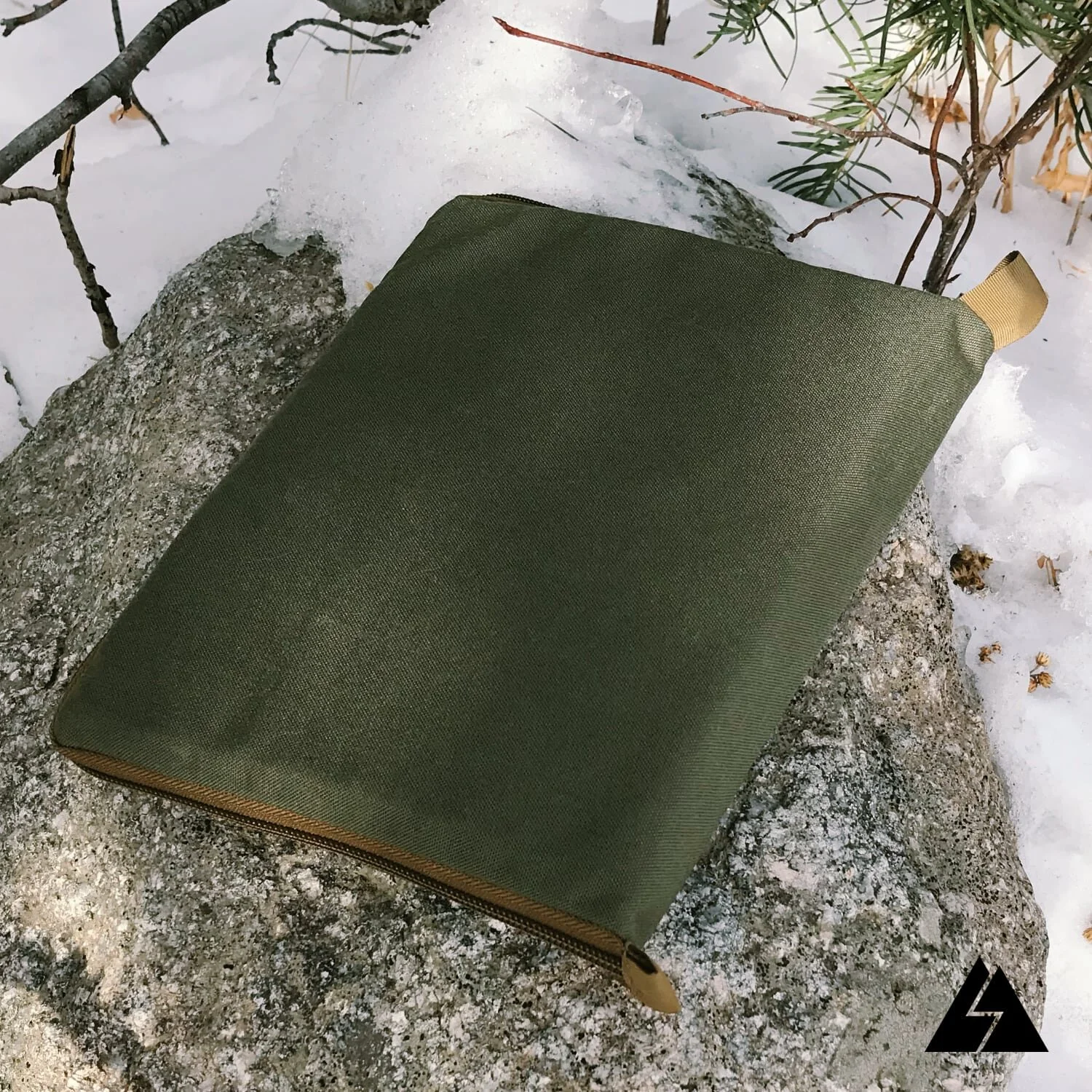The Box X Stitch
The box X stitch is a reinforcing stitch that is used frequently in making outdoor gear. It is primarily used to attach webbing straps to fabric or for making loops in webbing, although it has other uses as well. You will find it called out in some Stitchback patterns. For those new to sewing, a box x stitch may look complicated, but they are not that difficult to sew once you learn the trick.
This article will go over how to sew a box X stitch, as well as it’s advantages and disadvantages as compared to the bar tack stitch which is another reinforcement stitch which we covered in a separate article.
A box X is simply stitching in the form of a square or rectangle with a line of stitching running from corner to corner forming an X inside the box. The instructions below go over the steps I use for sewing a box X.
Step 1:
Mark the webbing where box X will be sewn. You can use a fabric marking pencil or chalk for this, but I find I can often use a piece of masking tape to perform double duty by holding the webbing in place on the fabric, and serving as a guide for the first line of stitching.
Stitch across the webbing where you marked. You want your stitching to end about 1/8 “ from the edge of the webbing. Be sure to stop with the needle down through the webbing and fabric.
Step 2:
With the needle down, lift the presser foot and rotate the fabric and webbing 90 degrees. Drop the presser foot and stitch the second side of the box.
Continue this process stitching the perimeter of the box, rotating the fabric and webbing at each corner with the needle down. If you want your box X to be perfectly square, count the stitches that you sew on the first side of the box and repeat that same number for the other three sides.
Step 3:
Once the perimeter of the box is complete, I like to stitch directly over the first row of stitching before starting the diagonal legs. This provides a little reinforcement, and ensures that the first row of stitching won’t come loose.
Step 4.
Again with the needle down. Lift the presser foot and rotate the fabric 45 degrees so that you can sew from corner to corner.
Once you reach the opposite corner, rotate the fabric and stitch directly over the 3rd side of the box. Rotate the fabric 45 degrees and stitch to the opposite corner completing the X. End the last leg by backstitching several stitches to lock the threads in place.
One advantage of the box X stitch is that because the stitching runs in 4 different directions, shear forces are well distributed. This is especially helpful when the webbing could be pulled from different directions such as a guy-out loop on a tarp, or a handle on a bag.
There is some debate about which stitch, the bar tack or the box X is stronger, and which should be used in different applications. An argument can be made that a bar-tack punches many more holes into a small area of fabric and thus weakens the fabric more than a box X stitch, which spreads the holes over a larger area. This could especially be a concern when using thinner fabrics or those that are more prone to ripping. In such cases it is a good idea to use the box X stitch if there is enough room to do so. If there is only room for a bar tack you can add an additional layer of fabric behind it for added strength.
Although I don’t have a definitive answer as to which stitch is stronger, I can say that I haven’t had an issue with either stitch failing in any of my MYOG projects as long as it was well sewn. In general, when I have the room, I use a box X stitch and when there isn’t room I use a bar tack.
Related products that we recommend:
The links above are affiliate links. As an Amazon Associate Stitchback earns from qualifying purchases.










Learn how to make a pair of ultralight wind mittens. Perfect for keeping your hands warm while hiking with trekking poles in cool weather.